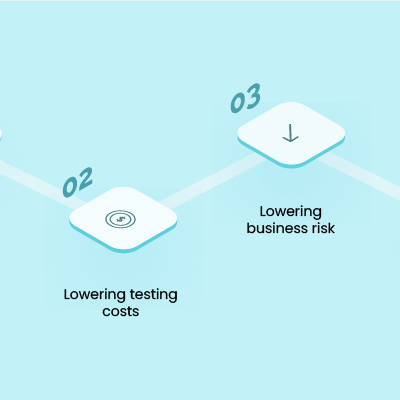Social media has become integral to our lives, allowing us to connect, share, and engage with others on various platforms. One crucial aspect of social media is engagement, which refers to user interactions and reactions to content. In this article, we will explore the concept of social media engagement, its types, metrics to measure it, strategies for boosting engagement, and its associated challenges.
Understanding Social Media Engagement
Definition of Social Media Engagement
Social media engagement encompasses all users’ actions on social media platforms, including likes, comments, shares, and clicks. It measures how users interact with content, indicating their interest, involvement, and connection with a brand or individual.
Importance of Social Media Engagement
Social media engagement is crucial for businesses, influencers, and individuals alike. It signifies an active and interested audience, helps build brand loyalty, increases visibility, and drives conversions. Engaged followers are likelier to share content, spread positive word-of-mouth, and become loyal customers.
Types of Social Media Engagement
Likes and Reactions
Likes and reactions are among the most common forms of social media engagement. Users can express their approval, agreement, or appreciation by clicking the like button or using reaction emojis.
Comments and Replies
Comments and replies allow users to share their thoughts, opinions, and feedback. It enables conversations, fosters community, and encourages further engagement.
Shares and Retweets
Shares and retweets allow users to distribute content they find valuable or interesting among their own network. This amplifies the reach of the content and exposes it to a wider audience.
Clicks and Link Engagement
Clicks and link engagement measure users’ interest in the content by clicking links, visiting websites, or accessing additional resources. It indicates a deeper engagement beyond surface-level interactions.
Metrics to Measure Social Media Engagement
Reach and Impressions
Reach represents the number of unique users who have seen a particular piece of content, while impressions indicate the total number of times that content has been displayed. These metrics help evaluate the initial visibility and exposure of content.
Engagement Rate
The engagement rate measures the level of interaction a piece of content receives relative to its reach. It is calculated by dividing the total engagement (likes, comments, shares, etc.) by the number of followers or impressions and multiplying it by 100 to obtain a percentage.
Conversion Rate
The conversion rate assesses the number of users who take the desired action after engaging with a piece of content. This action can vary based on the objective, such as signing up for a newsletter, purchasing, or filling out a form.
Sentiment Analysis
Sentiment analysis involves analyzing the sentiment expressed in comments, reviews, or mentions to gauge the overall perception and sentiment toward a brand or campaign. It helps in understanding the impact of engagement on brand reputation.
Strategies for Boosting Social Media Engagement
Consistent Posting and Timing
Posting consistently and optimally ensures that content reaches the target audience when they are most active. It establishes a predictable presence and encourages followers to engage regularly.
High-Quality Content
Creating high-quality content that is valuable, informative, entertaining, or inspiring increases the chances of engagement. Content that resonates with the audience’s interests and addresses their pain points will likely be shared and commented on. Search Solution LLC provides a facility for high-quality content.
Interacting and Responding
Engaging with the audience by responding to comments, messages, and mentions builds a connection and encourages further engagement. Prompt and personalized responses make users feel heard and valued.
Influencer Collaborations
Partnering with influencers who align with the brand’s values and target audience can significantly boost social media engagement. Influencers have dedicated followers who trust their recommendations, leading to increased engagement and exposure.
Challenges in Social Media Engagement
Managing Negative Feedback
Negative feedback can arise on social media platforms, and it is essential to address it tactfully. Responding promptly and empathetically and finding a resolution demonstrates the brand’s commitment to customer satisfaction and can turn a negative experience into a positive one.
Dealing with Trolls and Hate Speech
Trolls and hate speech can hinder meaningful engagement and create a negative environment. Implementing moderation strategies, setting community guidelines, and promptly addressing inappropriate behavior is crucial for maintaining a safe and positive online space.
Maintaining Brand Authenticity
Striking the right balance between promotional content and authentic storytelling is essential. Brands must maintain their unique voice and personality while providing valuable content that resonates with the audience.
Conclusion
Social media engagement is vital in building brand awareness, fostering customer loyalty, and driving conversions. By understanding the types of engagement and metrics to measure it and implementing effective strategies, individuals and businesses can leverage social media to connect with their audience, create meaningful interactions, and achieve their goals. For more information, visit the official website of Search Solution LLC.
FAQs
1. What is the role of hashtags in social media engagement?
Hashtags serve as a way to categorize content and make it discoverable to a broader audience. Using relevant and popular hashtags can increase content visibility and encourage engagement from users interested in those topics.
2. Can social media engagement help in increasing website traffic?
Yes, social media engagement can drive traffic to a website by including links in posts, leveraging click-through rates, and generating interest in shared content. Engaged users are more likely to explore further by visiting the associated website.
3. How often should I post on social media to boost engagement?
The posting frequency depends on the platform, target audience, and the type of content being shared. Consistency is key, but it’s important not to overwhelm or spam followers. Experimenting with posting schedules and analyzing engagement metrics can help determine the optimal frequency.
4. Are there any tools to measure social media engagement?
Several tools are available to measure social media engagement, such as Google Analytics, Hootsuite, Sprout Social, and Buffer. These tools provide valuable insights into reach, engagement rate, conversions, and other metrics to assess the effectiveness of social media efforts.
Also, read https://cityoftips.com/2023/05/26/excellent-performance-to-security-intel-evos-game-changers/
5. What are some examples of successful social media engagement campaigns?
Examples of successful social media engagement campaigns include Nike’s “Just Do It” campaign, which encouraged users to share their athletic achievements, and Starbucks’ “White Cup Contest,” where customers were invited to decorate their coffee cups and share the designs on social media. These campaigns generated massive user participation and engagement.




